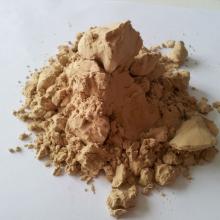Submitted by ivars211 on
(C6H10O5)n
Dextrin is one of the most commonly used binders in pyrotechnics as it is very cheap and readily available. It is water-soluble and can produce rock hard stars. Its cohesive power is weaker than that of SGRS anyway. Dextrin should not be used in a very damp climate as the stars tend to get wet rather than non-dextrin stars. Western pyrotechnics uses dextrin rather than SGRS, while the former is not popular in Japan and China.
Dextrin is easily prepared from starch. Potato and cornstarch will both work fine. The starch is spread out on a sheet in a layer about 1 cm thick and placed in the oven. The oven is then heated to 220°C(400°F) for several hours. The dextrin will turn slightly yellowish brown. One way to check if all the starch has been converted is to dissolve a small sample in boiling hot water and add a drop of KI3 solution (Lugol's iodine solution). A blue colour indicates presence of starch, which means the conversion hasn't completed yet. KI3 solution is conveniently prepared by dissolving a crystal of elemental iodine in a potassium iodide solution.
Dextrin is not particularly toxic or dangerous
Sparkler #1Composition |
Sparkler #11Composition |
Sparkler #13Composition |
Sparkler #2Composition |
Sparkler #3Composition |
Sparkler #7Composition |
Sparkler #9Composition |
Sparkler starComposition |
Sunrise yellowComposition |
Tiger tailComposition |

